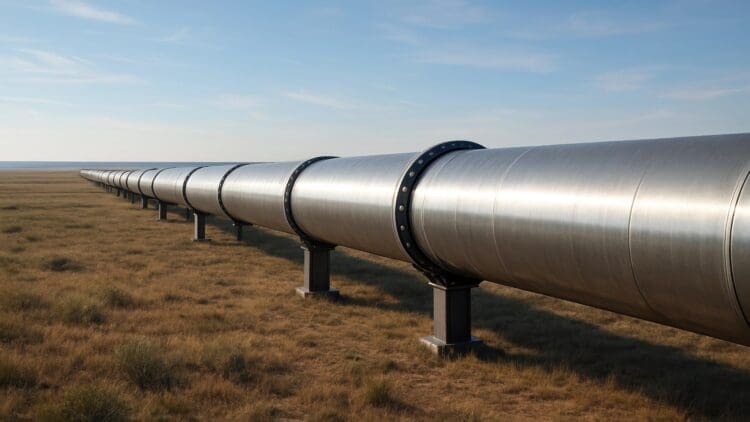Russia has had a tough year in 2025, with expectations that 2026 will not be much better. Following the latest wave of sanctions due to the ongoing war in Ukraine, Russia’s energy sector has been hit by a freight train of international backlash. However, Mother Russia still has some allies and companies willing to do business, despite the overwhelming calls by the international community to cut ties with Moscow. Russian energy major Gazprom has signed a binding agreement with the Chinese company CNPC to move ahead with the Power of Siberia 2 pipeline.
The three countries involved in the Power of Siberia 2 pipeline came together in Beijing recently
The Power of Siberia 2 pipeline will run through Russia into China via Mongolia, and the three nations sent representatives to Beijing recently to discuss the project and sign a binding memorandum. Russia is leaning on existing projects that could give its energy sector a much-needed lifeline following most nations of the world turning their backs on Moscow.
“On the basis of the public statement that was made by the leaders of the three countries – Russia, China and Mongolia – a legally binding memorandum was signed today on the construction of the Power of Siberia 2 gas pipeline and the Soyuz-Vostok transit gas pipeline through the territory of Mongolia. This project will make it possible to supply 50 billion cubic meters of gas per year from Russia with transit through Mongolia.” – CEO of Russian gas giant Gazprom , Alexei Miller
The new agreement outlines the responsibilities of the three nations involved and has set Russia up to supply gas for 30 years to the project. This is in sharp contrast to the current perception of Moscow, as many nations have all but cut ties, with a few exceptions for existing contracts. Mr Miller noted that an additional agreement was signed to increase gas exports through the existing Power of Siberia pipeline from 38 bcm per year to 44 bcm.
Gazprom and CNPC signed a new memorandum on strategic cooperation in Beijing
The pair of companies noted that the new memorandum on strategic cooperation reflects the new stage and commitment by each partner for the new planned project and any other additional ones in the future. Russia supplies gas to China from fields in Eastern Siberia, while Europe is fed via Western Siberia, before the new sanctions took hold, that is.
The Eastern Siberian fields are in proximity to the borders between Russia, China, and Mongolia, making transportation costs significantly less than the industry standards. Russia began exporting gas to China in 2019 via the first Power of Siberia pipeline, and Miller has noted that the new project was agreed upon long before the initial pipeline was even built.
Russia has been moving forward with projects in several countries that have not jumped on the sanction bandwagon, like the Congo, which has announced plans to start building the Pointe-Noire–Loutété–Maloukou-Tréchot pipeline later this year. Regardless of the sanctions that are meant to al but strangle the Russian energy industry, there are a few projects that Putin can still rely on.
Russia’s gas pipeline expertise is the last positive for the nation’s energy sector
Russia’s clear and evident expertise in building and operating gas pipelines has led the nation to new regions of the world. With the Congolese pipeline set to start construction this year, Russia has announced that the pipeline between itself and Kazakhstan is moving forward as well. This marks a new future in the energy industry. Essentially, geopolitical conflicts have all but separated the market into two: either you still do business with Russia, or you are more closely aligned with the rest of the world.





